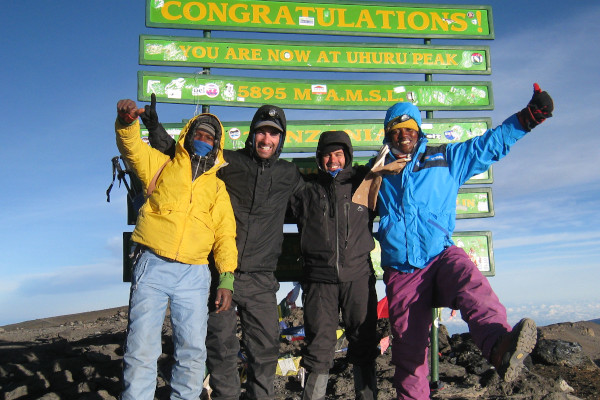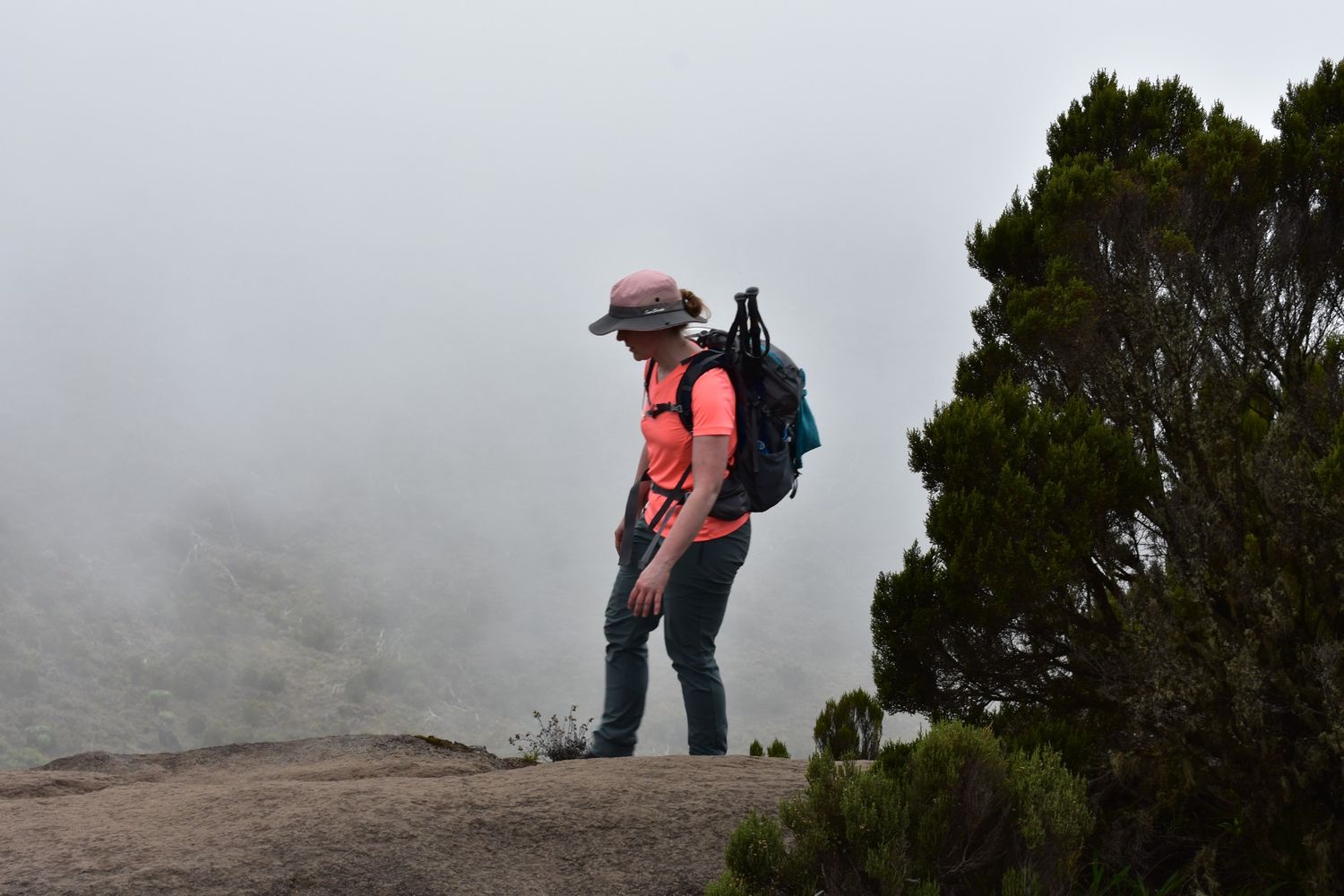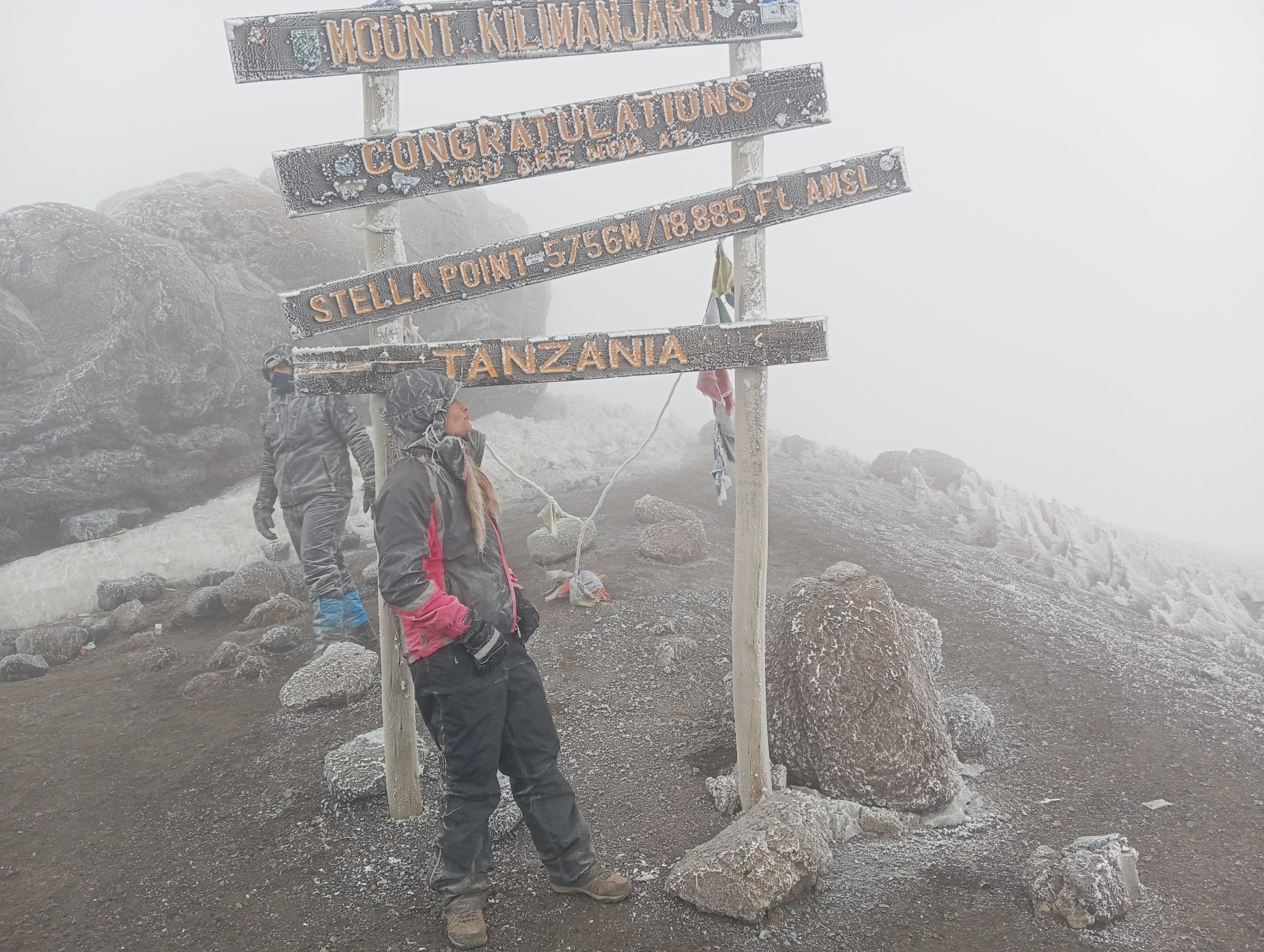So you have asthma, does that mean you are going to struggle at altitude on Kilimanjaro?
In this article I answer the question: Can you climb Kilimanjaro with asthma?
The short answer is ‘yes’, and many people do.
However it is important to recognise that every person’s asthma is different and therefore the impact of high altitude, from person to person, can be experienced in many different shapes and forms.
In general, asthma suffers who are fit and healthy, and have their asthma well under control, should not have a problem trekking Kilimanjaro provided they hike slowly, are properly acclimatised before going for the summit and stay alert to changes in their breathing.
Below I have provided a brief overview on high altitude trekking and altitude sickness, and how changes in altitude can effect asthma suffers.
My Quick Takeaways:
Got asthma and dreaming of climbing Kilimanjaro? Here’s what you need to know:
- Yes, You Can Do It! Many asthmatics have successfully reached the summit—but preparation is key.
- Cold & Dry Air Can Trigger Symptoms: Higher altitudes can make breathing harder, so keeping warm and using a scarf or buff to moisten the air can help.
- Bring Extra Medication: Carry enough inhalers (both reliever and preventer) and keep them easily accessible—cold temps can reduce effectiveness.
- Acclimatisation is Crucial: A slow ascent and hydration help minimise altitude effects—consider longer routes like the Northern Circuit.
- Consult Your Doctor First: Get medical clearance and discuss a plan for managing symptoms at altitude.
Asthma doesn’t have to stop you from summiting Kilimanjaro—with the right precautions, you can breathe easy and enjoy the adventure! Ready to take on the challenge? Let’s learn more!

Plan your Kilimanjaro trek
Get a quote from my recommended local Kilimanjaro operator
High altitude trekking and altitude sickness
As one climbs in altitude the available oxygen per breath decreases as air density decreases. The lower levels of oxygen lead to a pathological condition called altitude sickness or acute mountain sickness (AMS).
The body can and does adapt to lower levels of oxygen through the process of acclimatisation.
If one has not properly acclimatised to high altitude, a number of symptoms can arise; the most common being headaches, nausea, fatigue and vomiting.
If proper acclimatisation doesn’t occur and a person continues to ascend these symptoms can and most likely will become more acute and ultimately lead to death.

Plan your Kilimanjaro trek
Get a quote from my recommended local Kilimanjaro operator
We have written an extensive article on acclimatisation and altitude sickness on Kilimanjaro, but mention it here as asthma suffers should understand that at an acute level altitude sickness can lead to a condition called pulmonary edema, where fluid leaks into the lungs.
This condition can be confused with an asthma attack and treated as such, when in fact it is a deadly altitude sickness symptom.
A golden rule of altitude sickness is if you feel unwell, it is altitude sickness until proven otherwise.
Issues associated with severely restricted breathing should necessitate an immediate descent. Treatment for asthma can be given in addition to descent.
See Asthma UK's guide on travelling with Asthma.

Plan your Kilimanjaro trek
Get a quote from my recommended local Kilimanjaro operator
High altitude and asthma
As noted earlier, every person’s asthma is different. Here are some common high altitude asthma triggers to be aware of:
Cold
Some people’s asthma may be triggered from the cold temperatures that dominate at high altitude.
At altitudes above 5,000m on Kilimanjaro the average temperature is below zero degrees Celsius, and with the wind chill can get down to -20 degrees Celsius on the summit (see: Weather on Kilimanjaro).
If your asthma is triggered by cold weather you should ensure that you are properly layered up on summit night (see: Kilimanjaro clothing recommendations).
Some asthma suffers find it effective to use a neck band to cover and keep warm their throat, mouth and even nose. These bandanas are popular on Kilimanjaro.
Please also note that aerosol inhalers can also freeze.
It is important that you keep your inhaler in a warm spot and if you need to use it at high altitude, gently warm the canister by rubbing it between your hands for a minute or two.
A 2008 study by Stokes et al. showed that bronchial asthma on Mount Kilimanjaro is not a disadvantage (4).

Plan your Kilimanjaro trek
Get a quote from my recommended local Kilimanjaro operator
Exercise
Exercise-induced asthma is common and a key risk on Kilimanjaro.
It is quite difficult to avoid strenuous exercise on Kilimanjaro, especially as oxygen depletion at higher altitudes makes your body work harder.
My Pro Tip: If your asthma is triggered by exercise I recommend making sure that you are as fit as possible before your climb and that you go slowly on trek.
The latter is in fact the best strategy for trekking Kilimanjaro as slow progress to altitude aides in the acclimatisation process.
Allergies
If your asthma is triggered by allergies like pollen and house-dust mites, you will be pleased to know that exposure to such allergens are much lower at altitude.
Your asthma may even show an improvement at altitude. A number of academic studies have corroborated the improved performance of allergic asthma suffers with high altitude.
Noted studies include: Van Velzen et al. (1996), Grootendorst et al (2001) and Peroni et al. (1994)

Plan your Kilimanjaro trek
Get a quote from my recommended local Kilimanjaro operator
Best practice tips for climbing Kilimanjaro with asthma
Here are seven best practice tips for climbing Kilimanjaro with asthma:
- Make sure that your asthma is well-under control before arriving in Kilimanjaro. A 2002 Israeli study found that asthma suffers were at greater risk of experiencing an attack at high altitude if they had used their bronchodilator (reliever medication) three or more times a week over the previous year. I recommend seeing your doctor 3-6 months before your trip to Tanzania to review your asthma and trekking plans. Get your doctor to write a medical information letter or asthma attack card that you can carry with you on your trek and share with your tour operators and trekking partners, so that everyone knows what to do should you suffer an attack
- Ensure that you are at or near your peak fitness by setting up a cardiovascular training regime 3-6 months before departure. This article provides advice on training for Kilimanjaro
- Carry your inhaler and any other medication on you at all times
- Make sure to book onto a trek that allows adequate time to acclimatise on Mount Kilimanjaro. We recommend the 7 or 8 day Lemosho route or the 7 day Machame route
- Make sure to go slowly throughout the trek and drink loads of fluids
- Monitor your breathing closely. It is normal to be short of breath at high altitude, but if you feel unwell, make sure to communicate this to your trekking team, use your inhaler if you must and descend if conditions get worse
- Get adequate trekking insurance that includes cover for asthma. See this Kilimanjaro travel insurance article for guidance

Plan your Kilimanjaro trek
Get a quote from my recommended local Kilimanjaro operator
My Final Thoughts
Trekking to Kilimanjaro is a wonderful experience that can definitely be enjoyed by asthma suffers.
The key is to manage the risks of asthma. I hope the information above has been helpful. If you have any further questions please leave a comment below and I will respond within 24 hours.
Disclaimer
Please note: The information is this section, as with the whole website, is provided as an information resource only, and is not to be used or relied on for any diagnostic or treatment purposes.
The information is not intended to be patient education, does not create any patient-physician relationship, and should not be used as a substitute for professional diagnosis and treatment.
Research in this area is always progressing which may mean some of this information is out of date. It is your responsibility to seek the latest information should you be going to high altitude.



Hey
Thanks
Is there somewhere in Arusha to check your health that you can climb Mt kilimanjaro?
You could try ALMC: http://almc.or.tz/